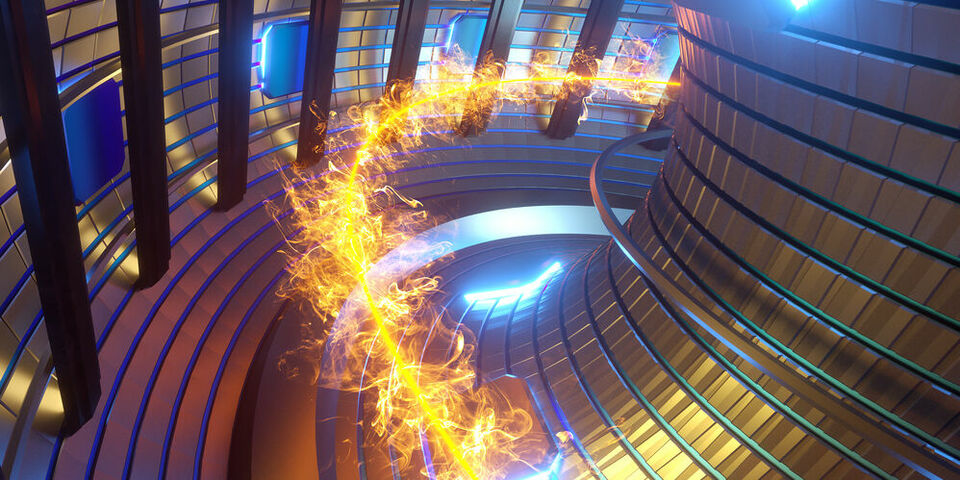NWO grants DIFFER and TU/e 2,5 million for a new fusion lab
DIFFER and TU/e have received a NWO Investment Grant Large of 2,5 million euros to build a laboratory where a new technology to produce heat shields for fusion reactors can be investigated: the LiMeS lab. A 3D printer will be constructed for the printing of tungsten and other materials and a large plasma setup will be constructed in which a prototype can be tested.
Extreme conditions exist in a fusion reactor and the reactor vessel wall must be able to withstand extreme heat. Many promising wall materials have been tested already and found to be inadequate. A wall made of liquid metals now seems to be the solution. Friday 21 May it was made public that DIFFER, located at the east side of the campus, and TU/e will receive a NWO Investment Grant Large of 2,5 million euros to build a laboratory where this new technology can be investigated: the LiMeS lab, which stands for Liquid-Metal Shield.
Tungsten is a heat-resistant metal that often serves as the wall material. However, even that material is not good enough despite a melting point of 3422 degrees Celsius. Project leader Thomas Morgan of DIFFER: “By way of comparison, the wall has to withstand harsher circumstances than a spaceship re-entering the Earth’s atmosphere.” So, for several years, fusion researchers have been working on a new category of heat shield for the wall combining tungsten with liquid metal. After all, you cannot make a dent in a liquid, and neither can you fracture, break, or rupture it.
The reactor’s wall would then consist of a sponge-like structure made from tungsten containing the liquid metal. Peter Rindt, researcher of DIFFER and TU/e: “We have already demonstrated that heat shields of liquid metal are highly promising at the conceptual level. The next step is applying this concept in a real reactor.”
3D printer
DIFFER and TU/e have jointly developed a plan to construct a laboratory for this research in which materials and designs can be developed and tested: the LiMeS-Lab. The laboratory consists of two main components. A 3D printer will be constructed for the printing of tungsten and other materials. This a highly promising production method for the sponge-like structures required. It is a new technology. In addition, a large plasma setup will be constructed in which a prototype can be tested. Plasma will be fired at the prototype, and it will experience almost the same conditions as it would in an actual fusion reactor. Meanwhile, researchers will be able to observe how the components withstand the test.
The 3D printer will be located in the Additive Manufacturing Lab of TU/e, and the plasma setup will be constructed at DIFFER. The equipment can also be used for other disciplines in which high temperatures play a role, such as for other energy sources, EUV lithography, and neutron sources.
The new lab will be called LiMeS, as mentioned the acronym for Liquid-Metal Shield, but it also refers to the Limes, the Roman border and line of defense, which also passed through the Netherlands. Similarly, the wall of liquid metal forms a line of protection against the plasma. The construction of the LiMeS laboratory is expected to be completed in 2024. The project will strengthen the intensive collaboration between TU/e and DIFFER in the area of fusion research.



Discussion